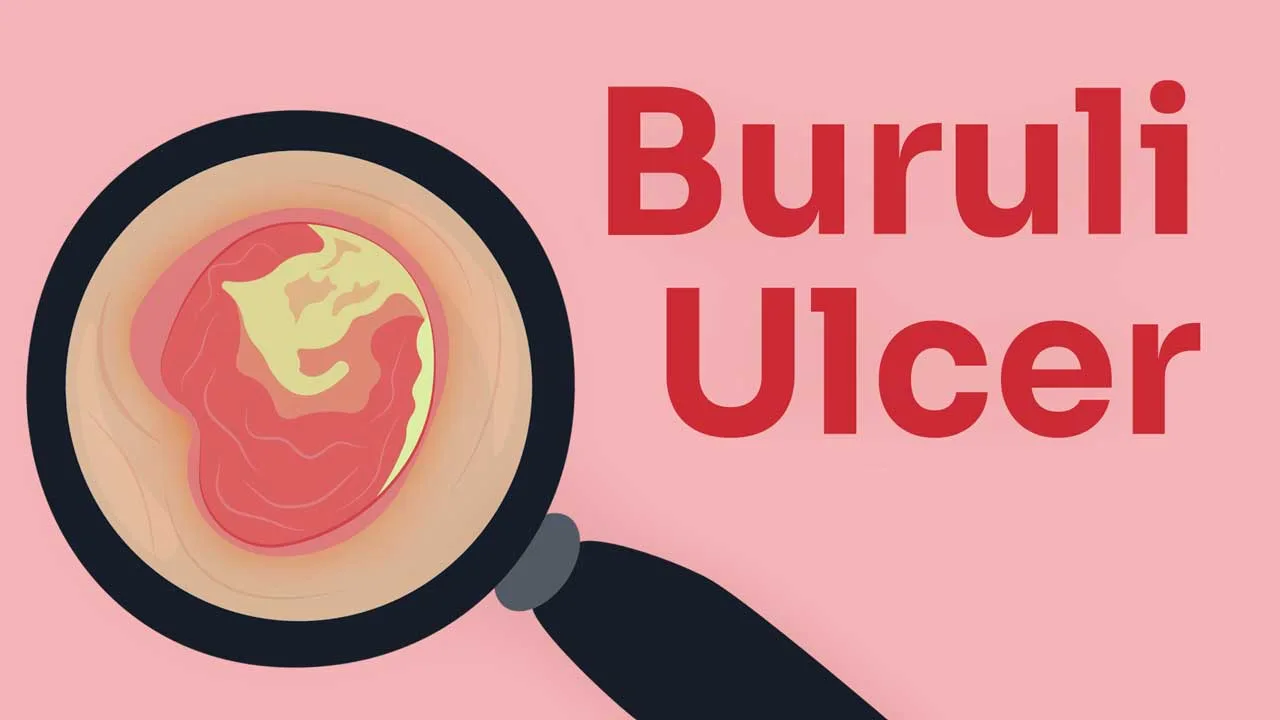Buruli ulcer, also known as Bairnsdale ulcer, Searles ulcer, Daintree ulcer, and Sik-belonga-sepik, is a neglected tropical disease (NTD) caused by infection with the bacterium Mycobacterium ulcerans. This bacterium produces a unique toxin, mycolactone, that causes progressive destruction of skin and underlying tissues, leading to large, painless ulcers. Early diagnosis and treatment are crucial to prevent long-term complications and disability.
Epidemiology and Transmission:
Buruli ulcer primarily affects tropical and subtropical regions, with the highest burden in West Africa, followed by Central Africa and South America. However, cases have been reported in over 30 countries across the globe. The exact mode of transmission of Mycobacterium ulcerans remains unknown, although it is believed to be environmental. The bacterium is found in aquatic environments, including slow-moving water bodies, where it infects insects, mollusks, and fish. While contact with contaminated water is suspected, the specific route of transmission to humans is still under investigation.
Symptoms and Stages:
Buruli ulcer progresses through different stages:
- Early stage: The initial sign is often a small, painless nodule or swelling under the skin, typically on the arms, legs, or feet. This may be accompanied by redness and thickening of the surrounding skin.
- Late stage: If left untreated, the nodule can develop into a large, painless ulcer with well-defined, undermined edges. The ulcer may ooze pus or blood and can destroy extensive areas of skin, fat, and even bone in severe cases.
Diagnosis and Treatment:
Early diagnosis is crucial for preventing long-term complications and disability. Diagnosis is typically based on clinical presentation, supported by laboratory tests, such as microscopy, culture, and PCR (polymerase chain reaction) to confirm the presence of Mycobacterium ulcerans.
Treatment for Buruli ulcer involves a combination of antibiotics to kill the bacteria and wound care to promote healing. The World Health Organization (WHO) recommends a combination of oral rifampicin and clarithromycin for most cases. In advanced stages, surgery may be necessary to remove damaged tissue and reconstruct affected areas.
Challenges and Public Health Significance:
Buruli ulcer is a significant public health concern in endemic regions, particularly due to:
- Limited awareness: The disease is often mistaken for other skin conditions, leading to delays in diagnosis and treatment.
- Limited healthcare access: Many affected communities reside in remote areas with limited access to proper healthcare facilities and diagnostic tests.
- Socio-economic impact: The disease can cause significant physical and psychological distress, leading to social isolation and economic hardship for patients and their families.
Global Efforts and Future Directions:
There is a growing recognition of the need to address Buruli ulcer as a neglected tropical disease. The WHO has developed a global road map for control and elimination of the disease, focusing on:
- Strengthening surveillance and diagnosis.
- Improving access to treatment.
- Promoting research and development of new diagnostics, drugs, and vaccines.
- Raising awareness and community engagement.
By addressing these challenges and implementing comprehensive control strategies, it is possible to significantly reduce the burden of Buruli ulcer and improve the lives of individuals and communities affected by this devastating disease.
Note: This information is intended for general knowledge and should not be taken as medical advice. Always consult with a healthcare professional for diagnosis and treatment of any medical condition.
















